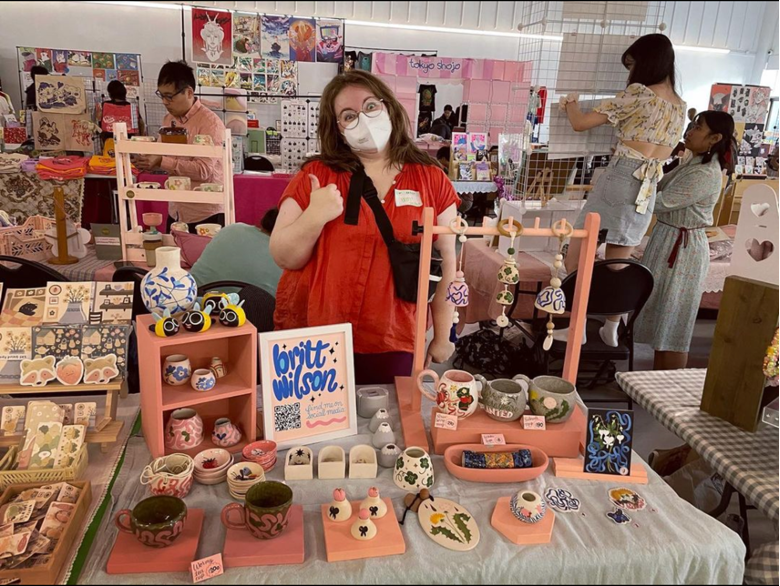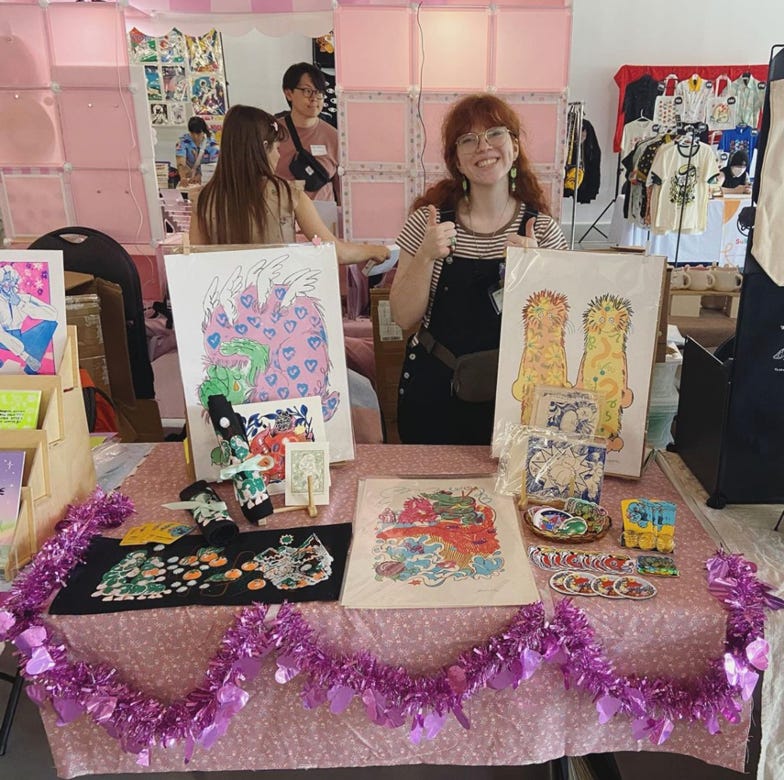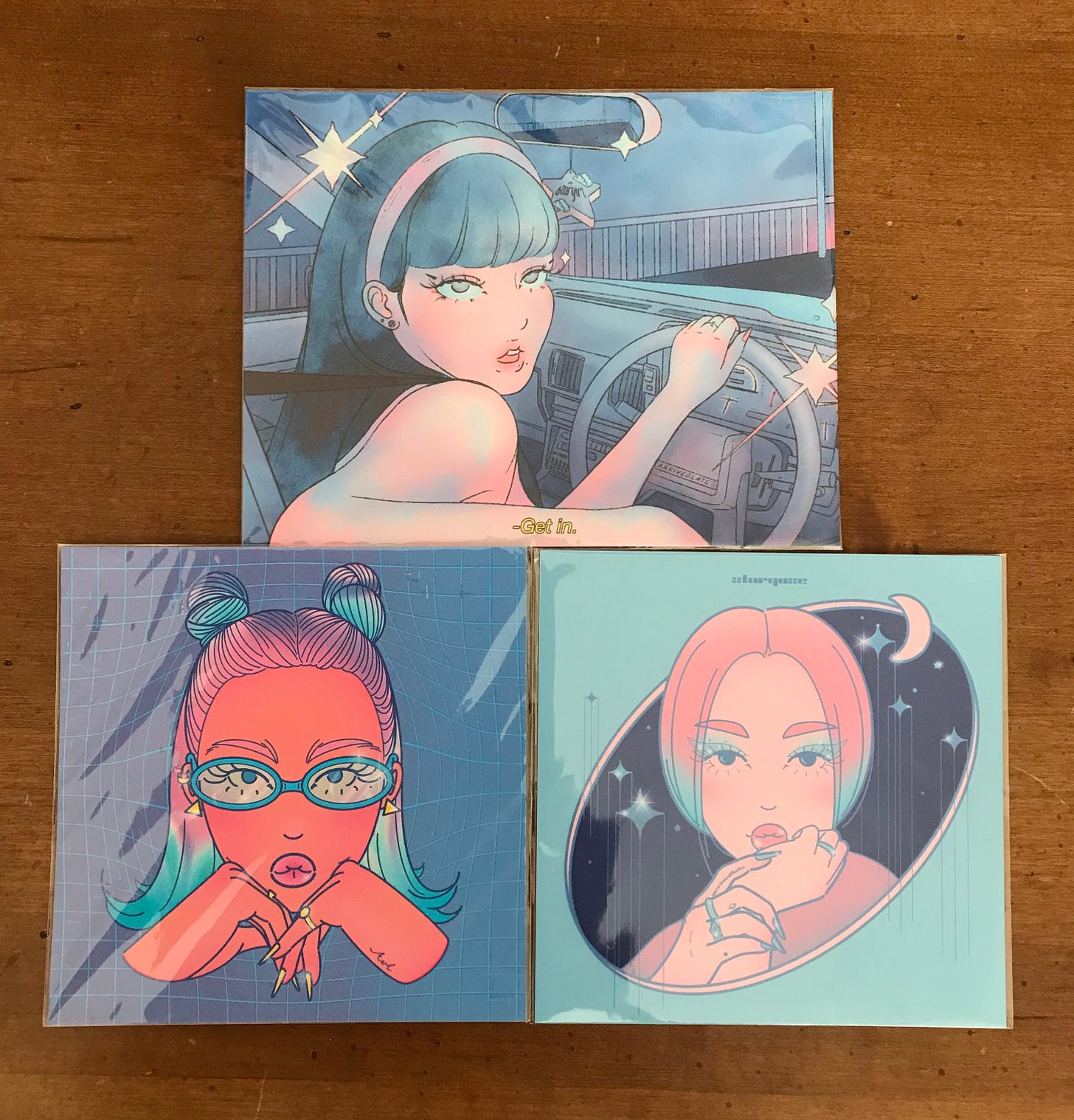Crafting Community and Creativity: A visit to the Tomo Arts Market
Reflecting on the market’s influence on artists of all kinds
Hundreds of people lined up outside The Parkdale Hall anxiously awaiting their turn to enter the Tomo Arts Market. Volunteers sporting frog crowns walked up and down the line checking in on the crowd, verifying tickets and providing umbrellas to combat the sizzling summer heat.
I discovered the event a month in advance when casually searching for art events in Toronto and immediately purchased tickets. It’s so rare to find an opportunity to connect with artists across Canada; as a digital artist suffering from a deadly combination of art block and university commitments, this arts market was just what I needed to rekindle my inspiration.
The Tomo Arts Market was created by artists, for artists. Illustrator Mugobunni founded the event in 2022 calling it “an independent artist alley that focuses on alternative art, cute merchandise, prints, ceramics, stationary, comics and more!” Tomo was started with the goal of supporting local artists by giving them a platform to connect with their community. The market is volunteer-run and hosted in both Edmonton and Toronto over the summer and winter months. Entry to the event is free, with RSVP and walk-in options.
It was finally my turn to enter the venue. Before me was a sea of carefully curated art booths buzzing with city goers. I observed the organization of the tables; there was no apparent grouping by art style. Ceramic artists were seated next to comic book artists and jewellery makers were seated next to digital artists. True to the market’s mission and values, this arrangement did not put anyone into boxes—they encouraged artists of different stylistic backgrounds to connect. Close to the entrance, my eyes darted towards a dreamy, pastel-coloured table, and I met my first artist of the day.
Nancy Zhang aka “Arrivedlate”

It felt as if I had entered an 80s dream: a retro vending machine holding small prints, a brick cellphone, a record player, and a media player playing fuzzy clips of old anime movies. After introducing ourselves, I asked her about her journey as an artist and the inspiration behind her pieces. A Design graduate from OCAD University, she explained that her artworks are rooted in nostalgia, and are heavily inspired by Vaporwave and the pastel pop aesthetic of the 80s. As an aspiring artist, learning more about where an established artist draws their inspiration from was important, as it allows me to find inspiration in areas I haven’t yet explored.
Britt Wilson aka “Britterson”

Switching from digital art to pottery, I approached a table full of gorgeous ceramic artworks, each carefully crafted and adorned with beautiful hand paintings. I commented on the precision of her works and asked her how long it took to make them. I don’t remember the number of hours, but I do remember my jaw dropping at her response—a testament to a ceramic artist’s calibre and patience! She motioned towards a grey hand-painted mug that she made from concrete, and I was in awe at how something so seemingly delicate was made with a harsh, urban material. After a lovely conversation, she handed me a pamphlet for a ceramic course that she was teaching at Parkdale Pottery in the fall and encouraged me to sign up. Although I wasn’t able to make it (university commitments…), I thought this offering was significant as it is a wonderful networking point between established and aspiring artists and allows established artists to share their craft with their community. I left her booth inspired promising myself that someday I’d learn from her.
Gabrielle Schwartz

Next, I discovered Gabrielle Schwartz, an illustrator and printmaker based in Burlington, Ontario. Her artworks were wholesome and conjured up a nostalgia for me that I couldn’t explain—whimsical characters in vibrant colours that looked like they came straight out of a fairy-tale! A unique item that caught my eye was a screen-printed clothing patch. She told me it was the last one and was surprised that piece ended up being her best seller. Looking back, I see those pieces as fragments linking the consumer with a past version of themselves, and how the cultural, shared experience of nostalgia is the thread connecting artists with their audiences. I asked her more about her printing process and she explained that her works were CMYK screen-prints. First, the linework is printed on paper, followed by careful layers of colour to add depth, texture and highlights. I ended up walking away with one of these CMYK screen-prints that will soon have a new home on the wall of my childhood bedroom.
Although just a glimpse of the many artists I got to meet at the Tomo Arts Market, the one thing that stood out the most to me was the overwhelming amount of creativity and support I felt from the community. Each artist had something different to bring to the table (literally) in style and medium, but what inspired me most was their kindness and openness to answering questions about their individual processes and art journeys. I left the venue feeling hopeful about the kind of art I could create in the future.
The following week at my summer job, my co-worker asked, “What is one thing you want to cross off your bucket list?”, to which I replied, “To one day have my own booth at the Tomo Arts Market.”



